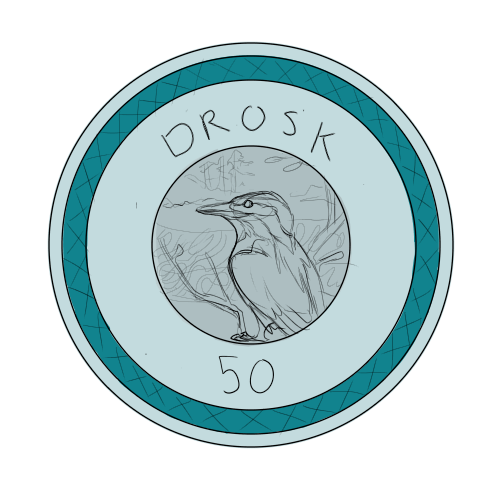Kingfisher
The kingfisher, though a mundane and non-magical creature, is very dear to the students of Njirralde. Before a large test, students will hope to chance upon a kingfisher on their way to school so that it may bring them luck. This tradition first started with Princess Catalina who, after coming stopping to admire a kingfisher on her way to the Royal Exams, scored full marks on her test. Afterward, she would return to the same bridge where she first saw that kingfisher before any big exams in hopes that it would once again bless her.
Soon, others began to copy her, watching to see if they could find a kingfisher on their way to school and it quickly became a tradition among students across the kingdom. Later, the Royal Scholars Academy which Princess Catalina had attended took the kingfisher as its mascot and a proposal submitted by Princess Catalina was passed making the kingfisher the national bird of Njirralde. Later, the kingfisher was added to the 50 Drosk coin.
The tradition does not exist only among students as graduates brought it into the workforce seeking the luck of a kingfisher for big events in their work and personal lives. Though the kingfisher first seen by Princess Catalina was a common kingfisher, due to most species being very similar in their awkward body shape the tradition applies to all kingfishers.
Basic Information
Anatomy
With a large head and beak and small feet and tail, the kingfisher is top heavy in its appearance. Its disproportionate body making it all the more endearing in the eyes of the people of Njirralde.
The bird is brightly colored with azure wings and tail, teal mantle, an orange and white eyestripe, white throat, orange belly, and bright red-orange feet. The beak is thick and long, optimal for piercing through the water's surface with little disturbance. Males have a completely black bill while females have a red lower bill.
Ecology and Habitats
The kingfisher lives near the many rivers and canals that run throughout Njirralde. They build burrows high in the embankments and many subsequent generations will come back to nest in the same or nearby embankments during the breeding season.
After the kingfisher became the national bird of Njirralde, all new stone embankments were built with either a section of mud to allow for burrowing, or artificial burrows.
Dietary Needs and Habits
The diet of the kingfisher mainly consists of small fish though it may also eat aquatic insects and crustaceans.
Additional Information
Geographic Origin and Distribution
The common kingfisher can be found throughout Southern Dovičaj. During the winter they migrate to Itzioa or further South to the Strvosk Archipelago.
Perception and Sensory Capabilities
Perhaps one of the reasons the tradition of searching for a kingfisher spread among students so quickly, especially among those dealing with mathematics, was the kingfisher's fishing ability. Able to keep its head stable while hovering above the water, correctly gauging the distance to its prey and the proper angle of approach despite the refraction of the water and entering a controlled dive that it can abort up to a certain distance if needed, the kingfisher is a precise hunter. Its performance has earned it the appreciation of students from certain fields and made it much easier for them to accept it as a bringer of luck on tests.




Comments